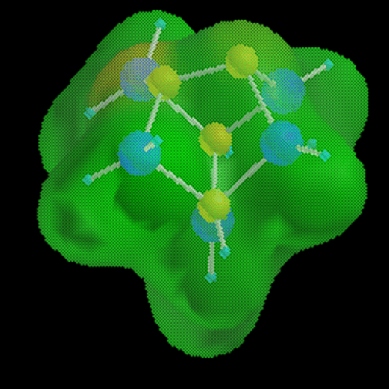 |
It has been assumed that the
surface reconstructions of InP (001) are the same as those on GaAs (001).
We have found that this is incorrect.
The striking difference between these two surfaces is best
exemplified by the anion-rich reconstructions.
For GaAs (001), the stable As-rich surface exhibits a (2x4) unit
cell, which is formed by two adjacent rows of dimers separated by
trenches. On this surface,
each arsenic dangling bond is filled with a pair of electrons, while the
gallium dangling bond is empty. Conversely,
we have discovered that phosphorous-rich InP (001) reconstructs into a
(2x1) unit cell. This
reconstruction is composed of a complete layer of buckled phosphorous
dimers. We have also calculated the
properties of a phosphorous-dimer cluster using density function theory.
This result is shown on the left.
The translucent contour represents the distribution of electron
spin densities. Compared with
the arsenic dimer, the phosphorous dimer is buckled!
Furthermore, We have found that the dangling bond of the bucked-up
atom is filled with a pair of electrons (green color), while the
buckled-down atom is populated with only one electron (orange color).
|

